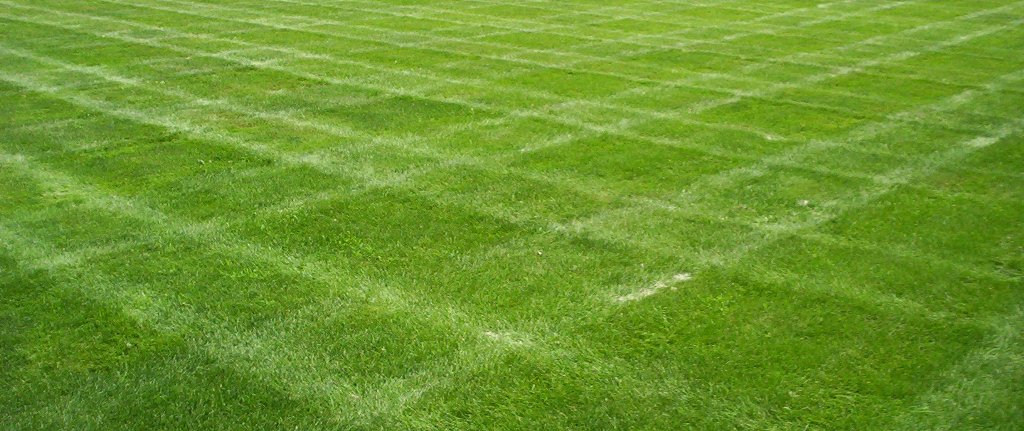Lawns
A STRATEGY FOR MAPPING AND MODELING THE ECOLOGICAL EFFECTS OF US LAWNS
http://www.isprs.org/proceedings/XXXVI/8-W27/milesi.pdf
KEY WORDS: turf grasses, residential lawns, BIOME-BGC, impervious surface area, carbon sequestration potential, water use
"The Great American Lawn"
ABSTRACT:
Lawns are ubiquitous in the American urban landscapes. However, little is known about their impact on the carbon and water cycles at the national level. The limited information on the total extent and spatial distribution of these ecosystems and the variability in management practices are the major factors complicating this assessment. In this study, relating turf grass area to fractional impervious surface area, it was estimated that potentially 163,812 km2 (± 35,850 km2) of land are cultivated with some form of lawn in the continental United States, an area three times larger than that of any irrigated crop. Using the Biome-BGC ecosystem process model, the growth of turf grasses was modelled for 865 sites across the 48 conterminous states under different management scenarios, including either removal or recycling of the grass clippings, different nitrogen fertilization rates and two alternative water irrigation practices. The results indicate that well watered and fertilized turf grasses act as a carbon sink, even assuming removal and bagging of the grass clippings after mowing. The potential soil carbon accumulation that could derive from the total surface under turf (up to 25.7 Tg of C/yr with the simulated scenarios) would require up to 695 to 900 liters of water per person per day, depending on the modeled water irrigation practices, and a cost in carbon emissions due to fertilization and operation of mowing equipment ranging from 15 to 35% of the sequestration.
STUDY BY:
NASA Ames Research Center, Moffett Field, CA 94035, USA, [email protected], [email protected]
NOAA/National Geophysical Data Center, 325 Broadway, Boulder, CO 80303, USA - [email protected]
Cooperative Institute for Research on the Atmosphere, Colorado State University, Fort Collins, CO 80309, USA - [email protected]
University of Colorado, Cooperative Institute for Research in the Environmental Sciences, 216 UCB, Boulder, CO, 80309, USA - [email protected]
Numerical Terradynamic Simulation Group, College of Forestry and Conservation, University of Montana Missoula, MT 59812, USA – [email protected]
_ _ _ _ _ _ _ _ _ _ _ _ _ _
Americans’ lawns now cover an area three times larger than any irrigated crop in the U.S.
According to a new study from NASA scientists in collaboration with researchers in the Mountain West, there is now an estimated total of 163,812 square kilometers, or more than 63,000 square miles, of lawn in America — about the size of Texas
_ _ _ _ _ _ _ _ _ _ _ _ _ _
1. INTRODUCTION
Lawns are ubiquitous in the American urban landscapes, as they can be found on most residential lots, parks, institutional and commercial landscapes, and golf courses, often as monocultures of turf grasses, independently of the local climate (Jenkins 1994). Existing estimates indicate that in the early 1990’s the surface cultivated with turf was up to three times larger than that of irrigated corn, the largest irrigated crop in the U.S. (DPRA, Incorporated 1992).
Turf grasses contribute to soil carbon (C) sequestration (Bandaranayake et al., 2003; Qian and Follett, 2002; Van Dersal, 1936) and, as a component of urban vegetation, to the mitigation of the urban heat island effect (Spronken-Smith et al., 2000) and to enhanced water infiltration compared to bare soil or impervious surfaces. However, turf has also been linked with a number of negative environmental impacts. Turf grasses often pose a neglected environmental hazard through the use of lawn chemicals and over-fertilization (Robbins and Sharp, 2003; Robbins et al., 2001), and, where used, irrigation of turf grasses sharply increases the summer water consumption for residential and commercial use, especially if grown in arid and semiarid regions, where it can account for 75% of the total household water consumption (Mayer et al., 1999).
In spite of the pervading presence of turf grass systems in the urban and suburban landscape and their considerable use of water resources, there continues to be little knowledge about the ecological functioning of these systems at the national level. If turf grasses are to be considered carbon sequestering components of the urban ecosystems, what is their contribution to the national carbon sequestration potential? And what is the estimated water use to sustain this sequestration potential? The fragmented distribution of residential and commercial lawns and the large variability in management practices adopted to grow the different types of turf surfaces certainly challenges the task of answering these questions.
In this study we present an estimate of the carbon sequestration potential of U.S. lawns and the implied water use by producing a spatially explicit estimate of their distribution within the contiguous 48 states and simulating their growth with an ecosystem process model.
______________________________________________
More
http://www.eattheweeds.com/when-is-a-lawn-a-lake/
http://michaelpollan.com/articles-archive/why-mow-the-case-against-lawns/
http://www.newyorker.com/magazine/2008/07/21/turf-war-2
http://blogs.scientificamerican.com/brainwaves/outgrowing-the-traditional-grass-lawn/
